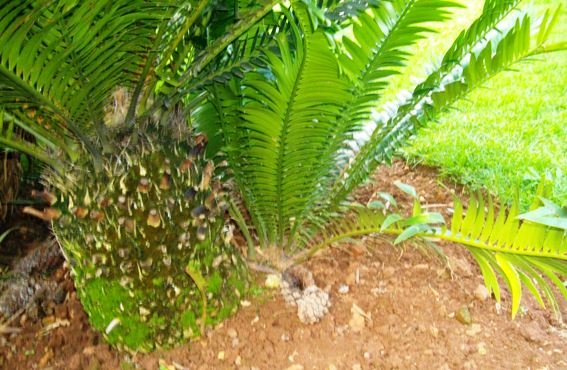Encephalartos lebomboensis (Retief) stem

Encephalartos lebomboensis (Retief form) grows fast and is not difficult to cultivate in warm climates. The plant in the photo is thriving in a Johannesburg garden. It often produces suckers that can be separated for growing new plants or left to grow next to the parent stem as was done in this case.
The main stem of this cycad may grow 4 m tall. Its surface often displays a patchwork effect from dropped off leaves, the sizes of different leaf markings depending on the abundance of rain during past growing seasons when either big or small leaves had grown; a bit like an historical record of weather conditions of long ago. The moss on the stem of the specimen in photo hides much of this feature in the present case.
This plant does well in both full sun or semi-shade. E. lebomboensis requires well-drained soil and is somewhat frost resistant. It resembles E. natalensis, but the seeds of the former are smoother and the leaves are straighter.
This is just one more plant currently considered to be endangered, requiring special care of the cultivated specimens (as those in habitat may all be lost). One may well ask whether plant knowledge necessarily adds to plant survival. A little knowledge without the right attitude to biodiversity and conservation may merely whet the appetite for acquiring and moving existing plants (Coates Palgrave, 2002; www.plantzafrica.com; www.florcomgardens.co.za).

